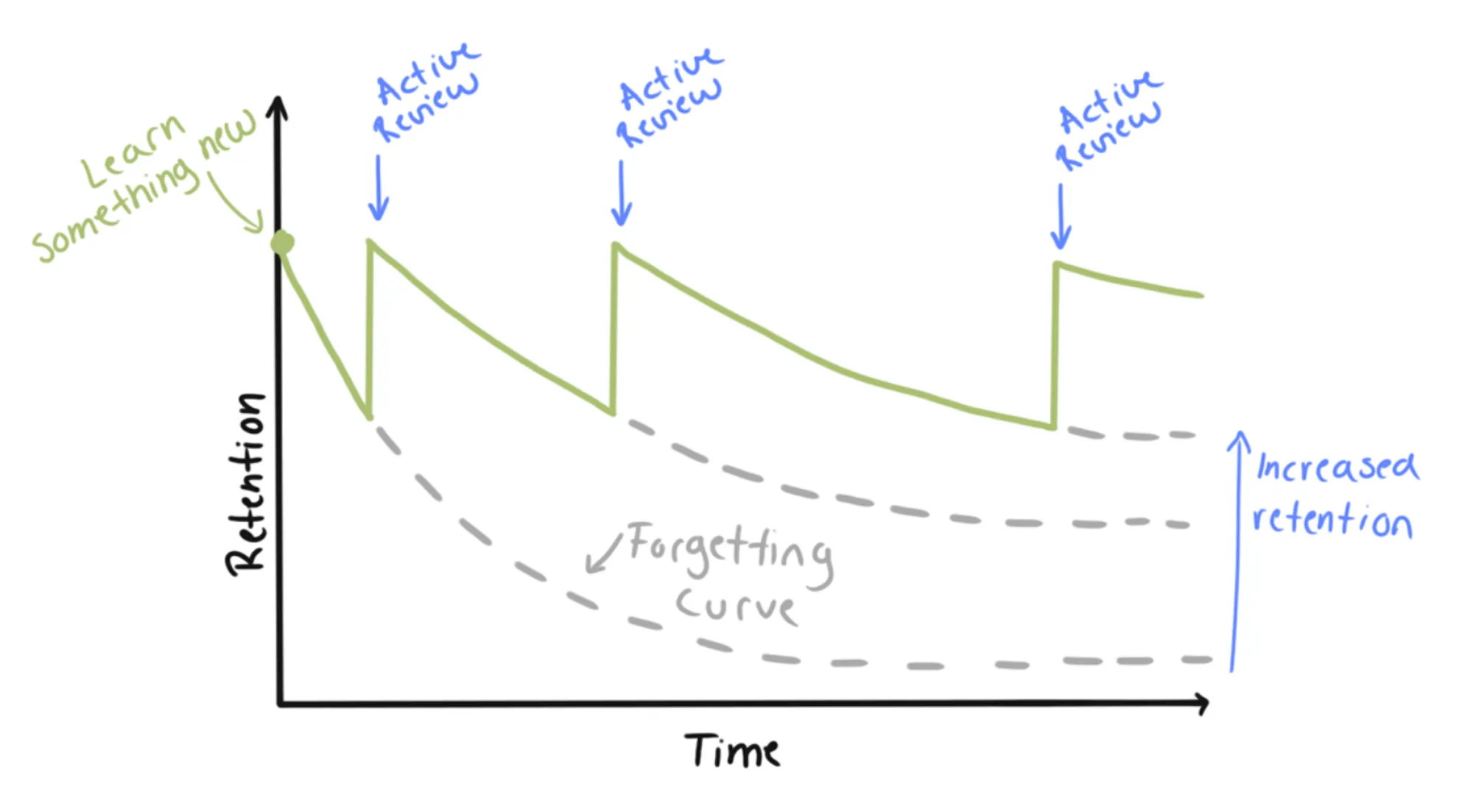When I was in college, my main study method for exams was to re-read my notes.
Only much later did I discover that that was the worst possible use of my time.
If you’ve been luckier than me, someone at some point told you about an app called Anki, which lets you study with flashcards.
There are 2 reasons why Anki is so effective:
- rather than passively rereading, you create question-answer pairs that make your brain actively recall information
- instead of cramming and reviewing all your stuff just before the exams, it schedules your reviews at optimal intervals during the semester, so that the information is already committed to long-term memory once you write your exam
There’s just one little problem with Anki. Once you get to a certain amount of flashcards, you review a flashcard and have a nagging feeling that you’ve seen something like that before. But where? And how does it relate?
You start to realize that (unlike your notes) it’s hard to keep your flashcards organized. You feel like learning isolated facts and missing the bigger picture.
See the How section below for a solution..
What
Active recall and spaced repetition: the most efficient techniques to commit knowledge to long-term memory.
Why
To remember what we read and write, we need to review the material. The best way to review is actively prompting your brain to come up with the answer (active recall), and spacing out the reviews over time at increasing intervals (spaced repetition).

How
Pen and paper
With pen and paper, the easiest way to do spaced repetition is the Leitner System.
Use index cards as flashcards: write a question at the front, and the answer at the back.
Next, you will need 5 boxes to sort the index cards. Cards start in box 1.
Whenever you review a card, and you get the answer correctly, it moves to the next box. If you get it wrong, it moves all the way back to box 1.
The spaced repetition comes from the review intervals: cards in box 1 are reviewed every day. Box 2 every other day. Box 3, once a week. Box 4, once a month. Box 5, every 3 months.
With Anki
Countless tutorials have been made on doing flashcards with Anki. Here’s a link to a popular one by Zach Highley.
In Traverse
You already have your map and your notes in Traverse. You can quickly create flashcards from your notes by using cloze deletions (also called fill-in-the-blank).
Select a word or phrase you’d like to blank out, and click
+ Flashcard. A flashcard is created with all the content from the page, but the selected word replaces by […]. In the answer section, the blanked out word is revealed. Note: you can edit the question section and remove all the context you don’t want for that question (maybe only keep a few surrounding sentences).Here’s a full example of pre-med student Raleigh creating clozed deletions from his notes:
Besides that, you can also create any custom question-answer pairs for any page by clicking
+ New Flashcard at the bottom. You can copy-paste any images, videos and other content in both question and answer fields.The powerful thing about creating flashcards directly from your notes, is that the flashcards no longer live in isolation. When reviewing a flashcard, with a few clicks you can see the corresponding page, and how it connects to other pages. You’re now learning things within a tree of knowledge rather than isolated facts.
Review flashcards
Use the blue
Review flashcards button in the top right to review your scheduled flashcards. In review mode, you can choose simple mode (with only Correct and Incorrect buttons), or custom mode with 4 repetition intervals (Wrong, Hard, Good, Easy).In Traverse (import from Anki)
You can also import Anki flashcards into Traverse. Click
New Topic and select Import. Upload your Anki deck and wait for all the media to be uploaded. Then your topic is created. It is recommended to go throught the mapping process after importing (see the 2nd emial in this series).Here’s a video on how to import from Anki.
Example
Let’s say you have a note that reads:
The forgetting curve shows how memories decay exponentially. It was discovered by Ebbinghaus in 1885.You could then create multiple flashcards like this to remember the key facts:
The forgetting curve shows how memories decay […].The forgetting curve shows how memories decay exponentially. It was discovered by […] in 1885The […] shows how memories decay exponentially. It was discovered by Ebbinghaus in 1885In the next article, we will link flashcards back to the visual map which we started with, and reveal a hidden power in your brain which is often ignored.


